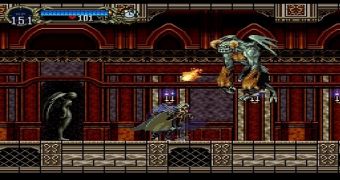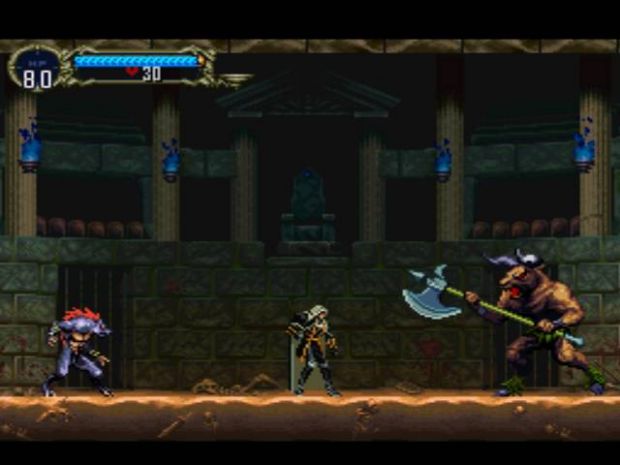This year's edition of the Game Developers Conference held in San Francisco seems to be offering a bounty of information on titles both past and future, as is the case with Koji Igarashi's talk regarding his legacy in the metroidvania genre.
His creation, Symphony of the Night, is an ornate gothic spectacle of slowly unraveling secrets, introducing the notion of exploration through the use of a gradually expanding toolset that allows players to backtrack and add previously unreachable areas they waltzed past earlier in their progression.
Symphony of the Night's significance lies mostly in the way it made a departure from existing Castlevania games with elegance and creativity. Igarashi reveals that the liberties his team took were due to the fact that, at the time of its creation, Symphony of the Night's developers didn't regard themselves to be franchise owners, and figured out that they could to whatever they wanted, as long as they treated the game as a separate series from the original.
The team was initially tasked with improving the game's controls and extending its lifespan, without interfering or conflicting with the canonical brand in any major way. As such, the first big design decision they took was removing death by falling, which was a standard practice in earlier Castlevania titles.
Inspired by the systems presented by Zelda and Metroid, the team led by Igarashi introduces role-playing game style experience points and power-ups as rewards for boss fights, increasing the way the game's learning curve and progression felt meaningful.
The team felt they needed to go further and push the envelope as far as the game's exploration was concerned, and so they made the character slightly larger and centered the screen on him instead of the traditional scrolling from left to right, which was a perfect fit for not having to worry about falling to your death and allowed users to move in a nonlinear way through the game world.
But having a bigger character placed in the center of the screen saw a new problem emerge: the iconic whip's length no longer suited the new visual paradigm. As such, Igarashi was facing a great challenge, having to come up with a new character without violating the existing rules and elements of the universe.The established universe had some limitations, but they realized that there also other characters in the canon, other non-human characters that players could snoop for secrets with.
He detailed the thought process behind choosing Alucard as a protagonist, stating that his being a half-human means that there was once a love story between a human and a vampire, which means that the two are not necessarily mortal foes.
As such, the character had surprising depth for the time, presenting a vampire in hiding who tries to avoid harming humans, just after his mother finds her end in a witch hunt, and the 2D gothic exploration game is laden with themes about his relationship to his family and his identity.
These themes led to Symphony of the Night's unique visual depth, with lower resolutions and fewer colors but with more palettes, leading to a higher rendering speed and more images outputted at once on the PlayStation 1.
Maps were created with a single path in mind, and for players who wanted to explore everything and not only enjoy the game's story, various items were hidden as a reward for the time they spent trying to find every little thing, allowing them to unlock new areas through the skills they have acquired, in order to provide a more meaningful and satisfying progression experience.

 14 DAY TRIAL //
14 DAY TRIAL // 

